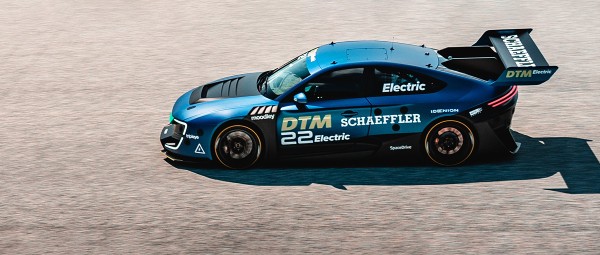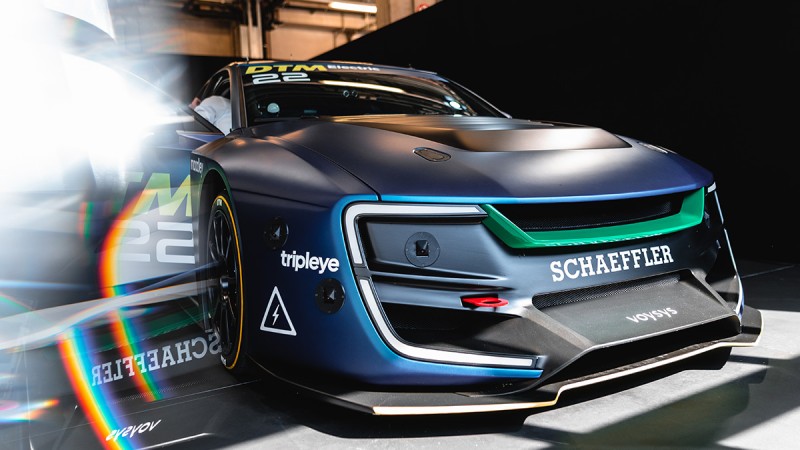Next-Level Torque Distribution: Torque Vectoring from Schaeffler
The DTM Electric Democar is far more than an outlook for for a possible, fully-electric touring car racing series, which is setting benchmarks with electric motors on individual wheels. With this car, Schaeffler is also fully exploiting the possibilities of torque vectoring. In motorsport, this means more dynamic driving and greater control. On the road, for example when used in the Schaeffler Mover, the torque vectoring system provides greater agility and safety.
Schaeffler know-how at vehicle level
The automotive world is changing, and with it the world of Schaeffler. It is no longer anywhere near enough, as an automobile and industry supplier, to focus on offering individual components or systems, such as engines, power electronics and transmission. To actively shape the mobility of the future as a pioneer, it is essential to have system-wide know-how at vehicle level.
This includes, in particular, the vehicle control system. It is this system that monitors and controls the connections and dependencies between the individual systems in a car. Many functions in today’s cars influence multiple vehicle components, which makes an intelligent, vehicle-wide control system necessary.
Torque vectoring as a dynamic driving function
The way a car handles is primarily defined by its mechanical properties, such as the centre of gravity, mass, tyres and chassis kinematics. However, the choice of these passive properties cannot be ideal for all driving situations – the result is that a car may experience understeer or career out of control. One possible way of influencing undesired yaw dynamics is to slow down individual wheels, which is usually performed by the ESP system.
However, decelerating wheels is not always the best option. Particularly when every fraction of a second counts, as it does in motorsport. This is where torque vectoring comes into play. It is capable of both slowing and accelerating individual wheels and, through systematic torque distribution, ensures that corners can be taken safely and faster.
Animation Torque Vectoring
Combination of torque vectoring and e-drive
With the DTM Electric Democar, Schaeffler is taking torque vectoring to the next level. The forerunner to a future, all-electric touring car series has four individual drive systems, one for each wheel. Each of these four electric motors can be controlled individually – which means that the torque can be freely distributed to all four wheels.
This way, every wheel always has the perfect amount of propulsion in any situation. The torque vectoring system thus influences driving dynamics and agility. For example, it allows greater stability at high speeds and more agility at low speeds.
This is made possible by the control unit. It continuously calculates how the handling can be influenced by altering the yaw moment. The e-motors can be controlled individually within milliseconds. This is significantly quicker than in the case of combustion engines with active differential. In fact, the system regulates the torque so quickly that Schaeffler had to take care to ensure that he torque vectoring system was integrated in the DTM Electric in such a way that it feels harmonious for the driver and not unnaturally quick.
Another plus for torque vectoring with e-motors are the benefits of regenerative braking. By applying the energy recovered under braking to each wheel individually, it is possible to reduce the car’s energy consumption.
Advantages in motorsport and production vehicles
While the focus is on driving dynamics and agility in motorsport, very different factors take priority with other Schaeffler innovations, such as the Schaeffler Mover, which also has four e-motors – one on each wheel. Torque vectoring achieves greater safety here. For example, it prevents wheelspin or ensures that, should one of the single-wheel drive systems fail, the three remaining motors compensate for the loss of power.
Schaeffler torque vectoring can be adjusted to suit the car and the driving situation: from maximum agility and driving dynamics to a particularly comfortable and safe ride. As such, it is predestined for use at the racetrack – and especially in production vehicles.
Schaeffler Mover: Torque vectoring achieves greater safety


